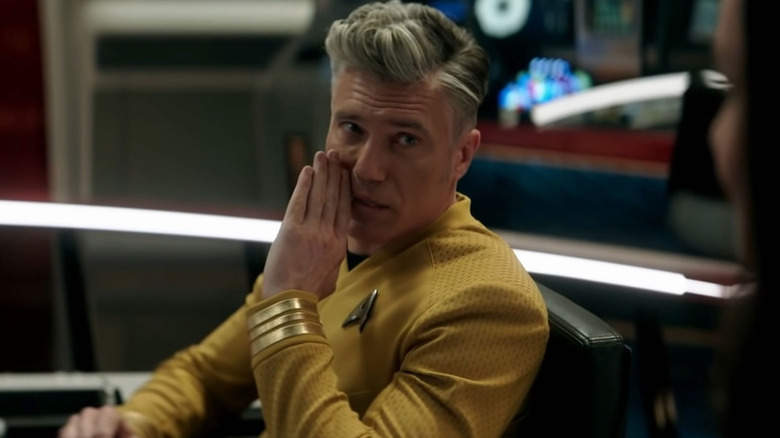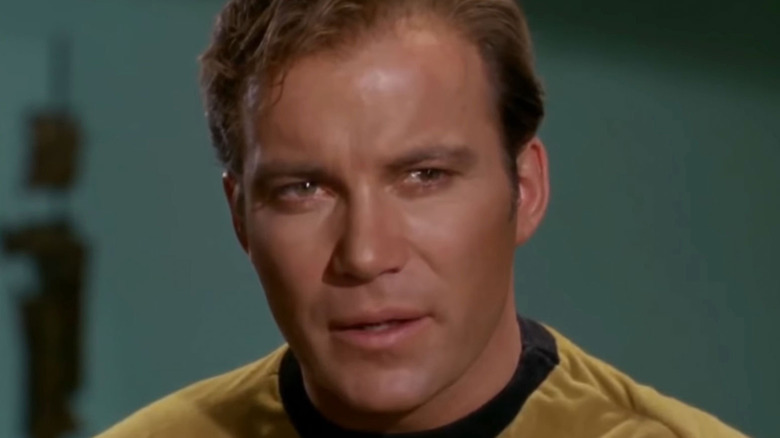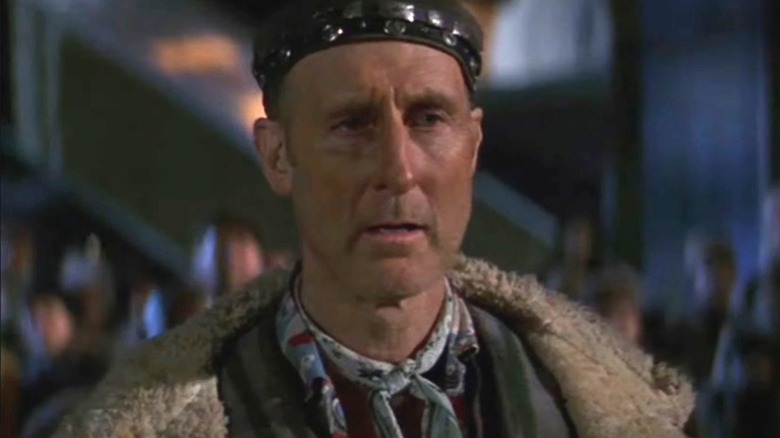Where Did Star Trek's 'Where No Man Has Gone Before' Line Originate? It's Complicated
Whether or not you know your Romulans from your Remans or how to throw a Vulcan salute, everyone knows an iconic quote from "Star Trek," with "where no man has gone before" up there with the best of them. The final line of the original series' opening monologue, as narrated by William Shatner as Captain James T. Kirk, was changed to the gender-neutral "no one" for "Star Trek: The Next Generation," with Captain Pike (Anson Mount) the latest to say it on "Star Trek: Strange New Worlds," but variations of it have appeared in multiple spots throughout history, stretching back not just decades but centuries.
Presumably with no input from a time-traveling Enterprise crew, the 1572 epic poem "The Lusiads" by Portuguese poet Luís de Camões, which details Portuguese explorer Vasco da Gama's discovery of a route to India by sea, includes the line "by oceans where none had ventured." British explorer James Cook had a similar aim, writing in a 1774 diary entry following an expedition to Newfoundland, "Ambition leads me not only farther than any other man has been before me, but as far as I think it possible for man to go." It might be a slightly wordier captain's log than Kirk's, but it's clear what he was going for.
H.P. Lovecraft and the White House both went where no man had gone before
While fitting that two explorers so far apart in time endeavored to go "where no man had gone before," the quote reappeared on at least two more occasions before "Star Trek" debuted. First, "The Dream-Quest of Unknown Kadath," a 1943 novella written by H.P. Lovecraft in 1927, sees the character Randolph Carter "[resolve] to go with bold entreaty whither no man had gone before."
Then, in 1958, less than a decade before Gene Rodenberry's beloved universe first graced our screens, the line "to go where no one has gone before" appeared in "Introduction to Outer Space," a booklet promoting the national space program. This goal was eventually achieved, of course, but the fact that it now stands as an iconic staple in science fiction makes it that much greater.
In the years that followed, those six words (which were eventually altered under Patrick Stewart's Captain Jean-Luc Picard's watch) have been said by a variety of important characters in "Star Trek" history, but it was on "Star Trek: Enterprise" that it actually became part of the universe — which is quite an impressive feat given how late in the process the line was added at all.
Star Trek: Enterprise created an origin for the iconic quote as no one had done before
According to production manager Herbert F. Solow in the 1998 documentary "Inside Star Trek: The Real Story," the line was added to the opening monologue by associate producer John D.F. Black, who took it from the title of Season 1, Episode 3 of the original "Star Trek" series, "Where No Man Has Gone Before," penned by Samuel A. Peeples. From there, it became a staple of the franchise, so much so that it actually made its way into "Star Trek" lore.
In "Star Trek: Enterprise" Season 1, Episode 1, "Broken Bow, Part 1," a recording plays of the inventor of the warp drive, Dr. Zefram Cochrane (James Cromwell), detailing his hopes for what it will provide. "Imagine it – thousands of inhabited planets at our fingertips, and we'll be able to explore those strange new worlds and seek out new life and new civilizations," he says. "This engine will let us go boldly where no man has gone before." The rest, as they say, is history.


